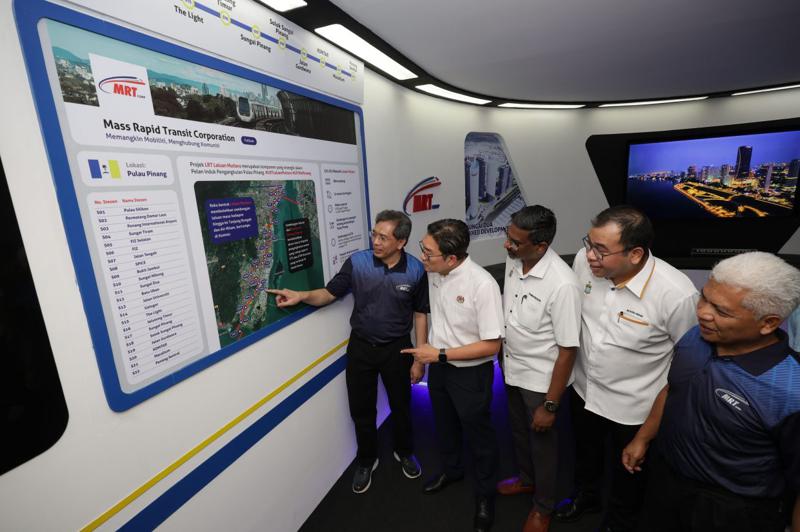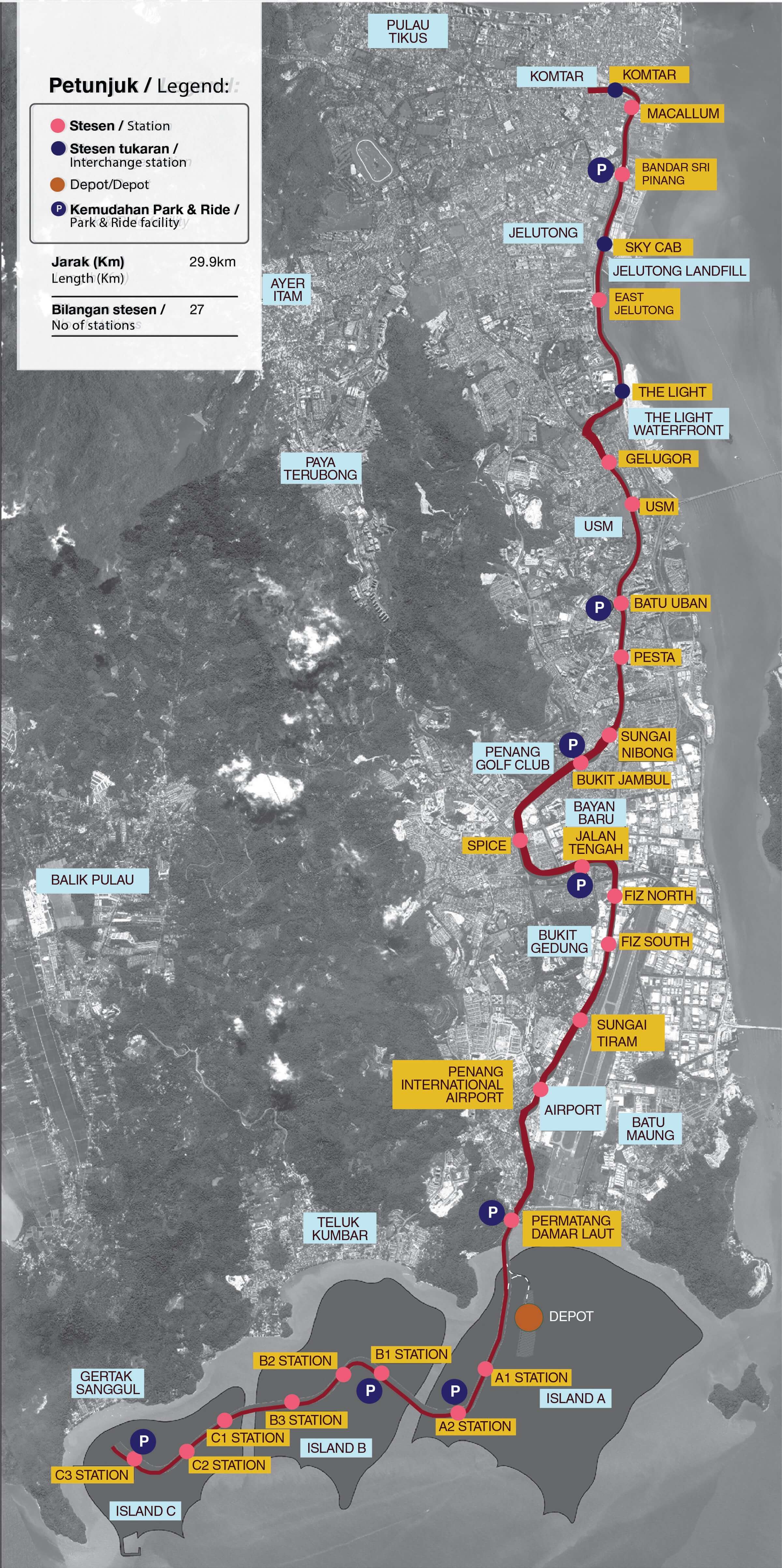Schemes to ease future congestion causing traffic trouble in Penang
GEORGE TOWN: Traffic on Penang island is often monstrous, especially at peak hours, with narrow roads and many industrial areas.
With five major transportation projects taking off almost in tandem this year, the nightmare is going to get worse for Penangites – at least until the projects are completed.
The Bayan Lepas area – where most factories are, Air Itam – the most densely populated area on the island, and Jalan Utama – the main thoroughfare leading to the seaside areas of Tanjung Tokong, Tanjung Bungah and Telok Bahang, are especially notorious for their jams.
However, these are also the places where the projects, meant to ease the island’s perennial traffic woes, are being built.
The RM851mil Air Itam to Tun Dr Lim Chong Eu Expressway bypass project is almost 50% ready but is causing massive jams in the Bandar Baru Air Itam area.
The four other projects that are expected to clog up nearby roads are the land reclamation project of Silicon Island in Batu Maung, the RM1.5bil Penang International Airport expansion, the Federal Government-funded Mutiara Line Light Rail Transit (LRT) – all in the Bayan Baru-Bayan Lepas area – as well as the RM245mil Penang Hill cable car project at Jalan Kebun Bunga.
For the next few years, motorists will have to bear with not just worse jams but also the inconvenience, noise, dust and vibrations.
The jams in Air Itam are already a major headache which Penangites have never experienced before.
“It can take me about 30 minutes to pass the traffic light junction at peak hours, when it should take just five minutes,” said hotel manager M. Muniandy, who lives in Air Itam.
“Two lanes at the junction were taken away to build the elevated road and now cars are lined up for between 2km and 3km just waiting for the light to turn green.
“I’ve never had such a bad time driving before.”
Muniandy was referring to the junction at Lebuhraya Thean Teik and Jalan Angsana, the main thoroughfare of Bandar Baru Air Itam.
Once it is completed, the Air Itam bypass will allow residents to have an uninterrupted hillside route all the way to the expressway near the Penang Bridge without having to cut through the city.
This will reduce the current 40-minute drive between Bandar Baru Air Itam and the Tun Dr Lim Chong Eu Expressway to less than 10 minutes.
For now however, residents are dealing with intense bottlenecks and long queues at junctions.
Sahabat Alam Malaysia president Meenakshi Raman said that the traffic impact assessments of these mega projects were each created in “silos”.
“They are done piecemeal, in a disjointed manner. It is a town-planning nightmare.
“We face unprecedented traffic congestion because of the shortsighted planning for long-term projects, some of which we continually assert are unnecessary,” she said.
Other stakeholders argue that while these mega projects are good for Penang in the long run, state authorities need to plan them out more carefully.
GUH Holdings Bhd’s Datuk Seri Kenneth H’ng said that besides intolerable jams, the severe shortage of public parking space is another daily headache.
“A new factory in Bayan Lepas is under construction right next to ours and because of that, the local authority has removed the roadside parking lots.
“Employees now suffer from a severe lack of public parking. They end up being forced to park illegally where they are regularly fined,” lamented the chief executive officer of the electronics, properties and utilities group.
To help his employees, H’ng’s firm provides special allowances for them to park at a nearby shopping complex early in the morning and a shuttle bus to take them to and from the factory.
“Because one factory is being built, the shopping complex’s parking facility is under strain, our company must bear extra cost and our employees also have to come out with money for ehailing rides to get back to their cars if they miss the shuttle.
“Poor planning causes far-reaching inconveniences to many.
“We need the authorities to plan construction work with all due diligence because the jams and parking problems erode the quality of life in Penang,” H’ng said.
The state government, meanwhile, has appealed for public cooperation and patience while these projects are carried out.
“The government cannot do it alone. We need the people’s full cooperation,” said state infrastructure and transport committee chairman Zairil Khir Johari.
One short-term solution the authorities are hoping will help is to station traffic policemen at critical junctions affected by these projects during peak hours.
Zairil said each of those projects has a detailed traffic management plan to reduce the impact of construction work on motorists.
“Every project will have a traffic management plan, but there will still be inconveniences. So we must all be patient and plan our commutes because the public infrastructure being constructed will eventually solve the traffic problems.
“Whenever there is major construction anywhere in the world, there will be short-term traffic consequences,” he said.
He said a new committee on road congestion and safety has been formed by the federal Cabinet and its first meeting will be held early next month with Penang traffic being on the agenda.It will be chaired by the secretary-general of the Transport Ministry, he added.
Related stories:











